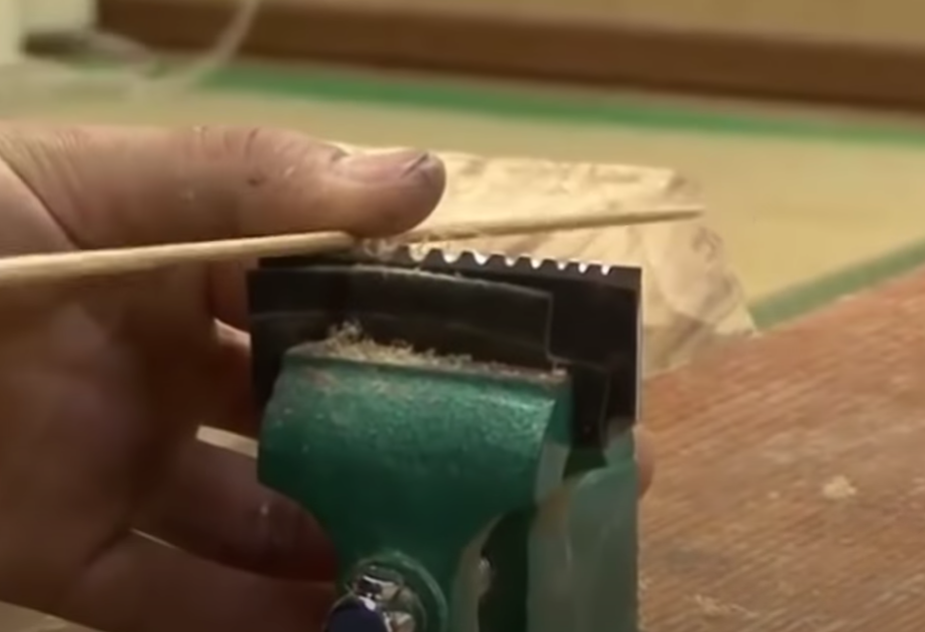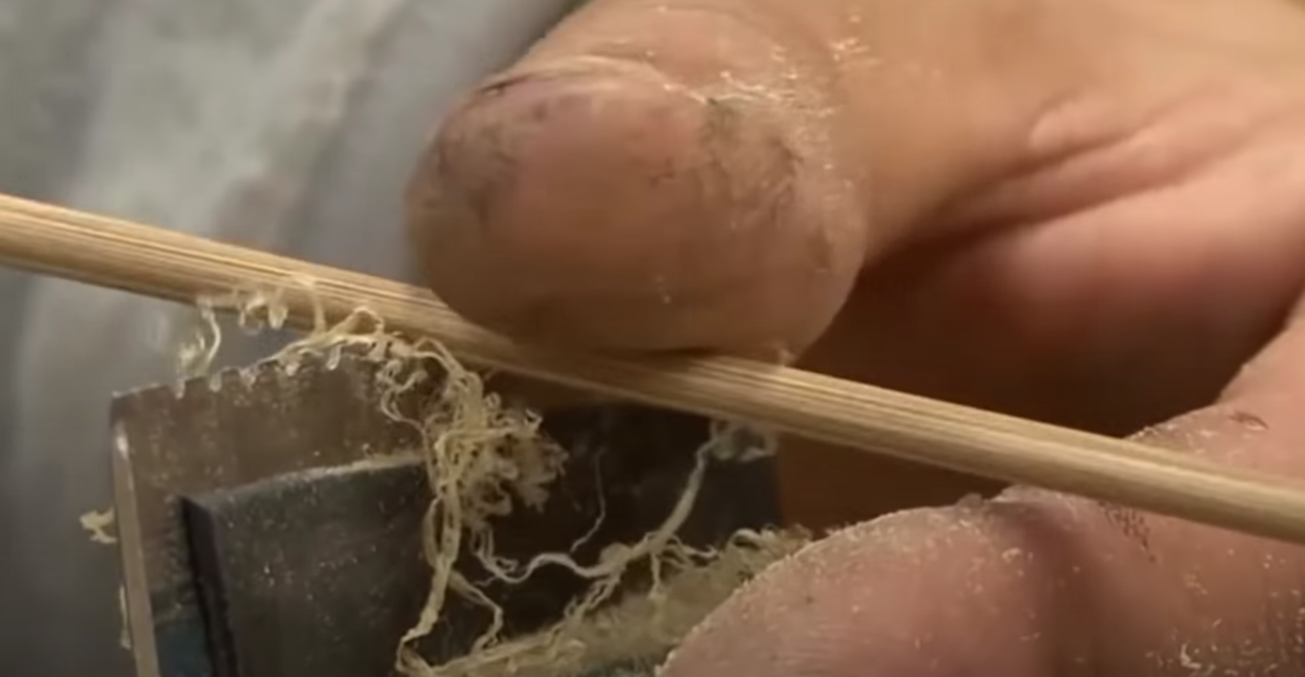
Bob Blarney
Members-
Posts
467 -
Joined
-
Last visited
Recent Profile Visitors
-
 wefalck reacted to a post in a topic:
Cleaning needle files
wefalck reacted to a post in a topic:
Cleaning needle files
-
 jud reacted to a post in a topic:
Cleaning needle files
jud reacted to a post in a topic:
Cleaning needle files
-
 Bob Cleek reacted to a post in a topic:
Cleaning needle files
Bob Cleek reacted to a post in a topic:
Cleaning needle files
-
 shipman reacted to a post in a topic:
Rare complete ship's curves set on eBay
shipman reacted to a post in a topic:
Rare complete ship's curves set on eBay
-
 Landlubber Mike reacted to a post in a topic:
Hock knives
Landlubber Mike reacted to a post in a topic:
Hock knives
-
 EricWilliamMarshall reacted to a post in a topic:
Hock knives
EricWilliamMarshall reacted to a post in a topic:
Hock knives
-
 EricWilliamMarshall reacted to a post in a topic:
Hock knives
EricWilliamMarshall reacted to a post in a topic:
Hock knives
-
 EricWilliamMarshall reacted to a post in a topic:
a wooden plane for sharpening plane irons, chisels, and maybe other things
EricWilliamMarshall reacted to a post in a topic:
a wooden plane for sharpening plane irons, chisels, and maybe other things
-
 FrankWouts reacted to a post in a topic:
New to table saw
FrankWouts reacted to a post in a topic:
New to table saw
-
 Canute reacted to a post in a topic:
An alternative to a magnifying visor
Canute reacted to a post in a topic:
An alternative to a magnifying visor
-
An alternative to a magnifying visor
Bob Blarney replied to mgdawson's topic in Modeling tools and Workshop Equipment
That will work. Another alternative is a smartphone camera mounted on a support. It can provide variable magnification, too. -
A DIY thickness sander
Bob Blarney replied to Kris Avonts's topic in Modeling tools and Workshop Equipment
Well done. Here's a URL link to one that I built for thicknessing 8" x 20" wood stock for guitar tops and sides down to 2.0 to 3.0 mm thick. The adjustment mechanism isn't quite so complex. One possible advantage of my design is that the stock can be tapered across its width by adjusting the alignment of the feed ramp. If you can't access the article at the Musical Instrument Makers Forum, please let me know and I'll post a description. http://www.mimf.com/old-lib/hammond_sander_lathe.htm And here is another similar idea that I found a year or two ago, published in Popular Mechanics, July 1958, p 190. A dust collection apparatus is really essential and would not be difficult to adapt to this design. The mechanical parts are available at McMaster.com https://books.google.com/books?id=KN8DAAAAMBAJ&lpg=PA191&dq=drum thickness sander intitle%3APopular intitle%3AMechanics&pg=PA191#v=onepage&q=drum thickness sander intitle%3APopular intitle%3AMechanics&f=true -
As a first time build, I'd advise using plain old Elmer's GlueAll. Many many models have been built with it, and it's no nearly as difficult to reverse it as compared to a yellow PVA glue. There may other parts in the model where a different glue might be better (such a cyanoacrylate, i.e. superglue), but start with Elmers. Another point about using glue for building models. In many places, it would be good to squeeze a dot of glue on a notecard and apply it to the part with a plastic toothpick. This is especially so with superglues. A 1cc or 3cc syringe with a blunt needle can be very useful too, about 18 to 20ga needles, and sometimes a 16ga or a 22ga depending on the viscosity of the glue.
- 9 replies
-
- new member
- wood ship
-
(and 4 more)
Tagged with:
-
Hello, I thought you might like to see this fixture that a Japanese fishing rod maker uses to taper his bamboo stock. The bamboo rod is twirled as it's drawn over the plate.
-
A jewelers' supply is a good source for files and other small hand tools. And I find that wine corks make excellent handles. Small file tangs can be pushed in, while for larger files I drill a hole first and sometimes glue in a brass tube that accepts the tang. Finally, avoid using the same file for both wood and metal.
-
Drilling holes with crisp edges in wood
Bob Blarney replied to laps's topic in Modeling tools and Workshop Equipment
Occasionally, I have applied a wash coat of shellac to lock the surface fibers down. The shellac can be sanded off easily or wiped off with alcohol. As always, first try this on a piece of scrap of the same species. -
You might looking for Potts scissors - they are available in several degrees of angulation. Also, there are now many disposable 'keyhole' instruments designed for minimally invasive surgery that have some interesting articulations It might be difficult to procure them, however
-
Table Saw Blade Stiffener
Bob Blarney replied to Charles Green's topic in Modeling tools and Workshop Equipment
A blade stiffener is a good idea. I'm surprised that a Powermatic would need that much of a tuneup. By the way, have you ever tried a smaller blade - an 8 or 9 inch? They're less expensive and give more apparent power for cutting. My 1956 Yates American is an 8" saw that cuts 2-3/8" deep. If I use a 7-1/4"blade, there is a very significant monetary savings at the loss of only 3/8" depth of cut. That way I save my expensive high-quality blades for finer work. -
Mill Speed to Avoid Chipping
Bob Blarney replied to ChrisLBren's topic in Modeling tools and Workshop Equipment
I think you'll find that while HSS won't last as long, but it will be sharper than carbide. Down-spiral bits can be useful too. Another tip might be to do what I've done on some guitar soundboards - Put a thin 'wash' coat of shellac on the surface - it can be wiped with ethanol (denatured or drinkable) and sanded off. As always - try it on scrap material first. -
Jointer question/recommendation
Bob Blarney replied to davec's topic in Modeling tools and Workshop Equipment
I don't know why I didn't remember the Safe-T planer - a drill press accessory. An important tip about using this tool is to set the table so that it is perpendicular to the quill of the drill press (and so parallel to the disc). To do this, bend a coathanger into Z shape and mount it in the chuck. Then turn the chuck by hand and adjust the table so that the other end of the Z just scrapes the table as it rotates. It may be possible to find this at a better price. https://www.stewmac.com/luthier-tools-and-supplies/types-of-tools/planes/stewmac-safe-t-planer.html -
Jointer question/recommendation
Bob Blarney replied to davec's topic in Modeling tools and Workshop Equipment
A hand plane, a square, and a workbench -
Genesis 7.2V pistol grip rotary tool
Bob Blarney replied to grsjax's topic in Modeling tools and Workshop Equipment
The switch issues would be a dealbreakers for me. A bad switch out of the box doesn't bode well, but perhaps that's a fluke and the vendor did the right thing. So far as placement of the switch goes, a good fix would be to use a footswitch. And perhaps a sewing machine pedal could control speed as well. There is one other thing about this whole genre of tools that I don't like - the angle of the bit/cutter when grinding or cutting. It's always necessary to wear eye protection and possibly face protection because fragments are usually/often flung back at the operator. I suppose that a transparent acrylic shield could be placed on the bench to deflect particles, but that's just another thing to have around. -
one more thing - avoid 3-wheel bandsaws - most can be very cranky.
-
 Bob Blarney reacted to a post in a topic:
Bandsaws
Bob Blarney reacted to a post in a topic:
Bandsaws
-
Perhaps you might enjoy watching this fellow rebuild a sailing yacht from the early 1900s. He uses a 36" shipsaw to cut new frames.
-
Yes, it refers to the diameter of the wheels. The actual distance from the blade to the saw's frame is less. On my ancient 1940s Milwaukee-Delta it's about 12", but with forethought that's not usually a problem. A standard 14" saw has ~6 inches depth of cut, but with an optional riser block it will cut 12" thick. The motor's power is not as important as some believe - It's a equally a matter of proper saw adjustment, a suitable blade style, and feed rate.
About us
Modelshipworld - Advancing Ship Modeling through Research
SSL Secured
Your security is important for us so this Website is SSL-Secured
NRG Mailing Address
Nautical Research Guild
237 South Lincoln Street
Westmont IL, 60559-1917
Model Ship World ® and the MSW logo are Registered Trademarks, and belong to the Nautical Research Guild (United States Patent and Trademark Office: No. 6,929,264 & No. 6,929,274, registered Dec. 20, 2022)
Helpful Links
About the NRG
If you enjoy building ship models that are historically accurate as well as beautiful, then The Nautical Research Guild (NRG) is just right for you.
The Guild is a non-profit educational organization whose mission is to “Advance Ship Modeling Through Research”. We provide support to our members in their efforts to raise the quality of their model ships.
The Nautical Research Guild has published our world-renowned quarterly magazine, The Nautical Research Journal, since 1955. The pages of the Journal are full of articles by accomplished ship modelers who show you how they create those exquisite details on their models, and by maritime historians who show you the correct details to build. The Journal is available in both print and digital editions. Go to the NRG web site (www.thenrg.org) to download a complimentary digital copy of the Journal. The NRG also publishes plan sets, books and compilations of back issues of the Journal and the former Ships in Scale and Model Ship Builder magazines.



